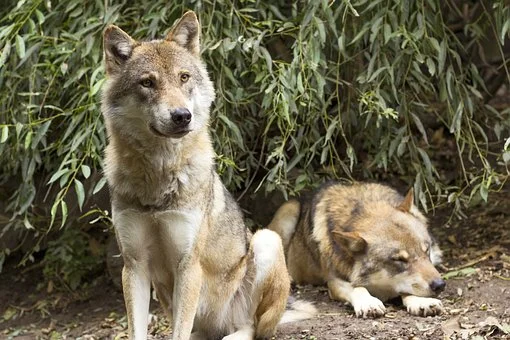Gray wolves are an important and fascinating species that play a vital role in the ecosystem. In this article, we will explore some interesting facts about gray wolves, including their physical characteristics, social behavior, diet, hunting habits, conservation, and their unique relationship with humans.
Physical Characteristics of Gray Wolves
Gray wolves are the largest members of the Canidae family and are characterized by their large, muscular bodies, sharp teeth, and long, bushy tails. They typically weigh between 60 and 120 pounds and stand about 2 to 3 feet tall at the shoulder.
Gray wolves can vary in color from gray to black, with some individuals having white or reddish-brown fur. Their thick fur provides insulation in cold environments, and their large paws are adapted to move efficiently on different types of terrain.
Social Behavior of Gray Wolves
Gray wolves are highly social animals and live in packs that can range in size from 2 to 30 individuals. Pack members have distinct roles and hierarchies, with alpha wolves being the dominant members.
Alpha wolves are responsible for leading the pack and making important decisions, such as when to hunt and where to rest. Other pack members include beta wolves, which assist the alpha wolves, and omega wolves, which are at the bottom of the pack hierarchy.
Gray wolves communicate with each other through body language, vocalizations, and scent marking.
Diet and Hunting Habits of Gray Wolves
Gray wolves are carnivorous and primarily feed on large ungulates, such as elk, deer, and moose. They are also known to eat smaller prey, such as beavers, rodents, and birds. Gray wolves are highly skilled hunters and use a variety of hunting strategies, including chasing down prey and ambushing them from cover.
They also work together as a pack to take down larger prey. Hunting is crucial for the survival of gray wolves, as they need to consume large amounts of protein to maintain their large bodies and stay healthy.
Gray Wolf Conservation and Endangered Status
Gray wolves were once widespread across North America, Europe, and Asia, but due to habitat loss and hunting, their population numbers have declined dramatically. In the United States, gray wolves were listed as an endangered species in 1974.
Since then, conservation efforts have been implemented to protect gray wolves, including reintroduction programs in areas where they were once found.
Interesting Facts About Gray Wolves
Gray wolves have a number of unique characteristics and behaviors that make them fascinating creatures. For example, they are known for their distinctive howling, which they use to communicate with other pack members and defend their territory.
They also use scent marking to communicate and establish their dominance. Gray wolves are closely related to domestic dogs and are capable of interbreeding with them, creating a hybrid species known as the wolf-dog.
Gray wolves have also played a significant role in mythology and folklore, with many cultures viewing them as powerful and mystical creatures.
Conclusion
Gray wolves are a crucial species in the ecosystem, and learning about their unique physical characteristics, social behavior, diet, hunting habits, and conservation status can help us appreciate and protect them. By working to preserve gray wolf populations and their habitats, we can help ensure the health and sustainability of our natural world.
Related: Wolf Pups Facts
